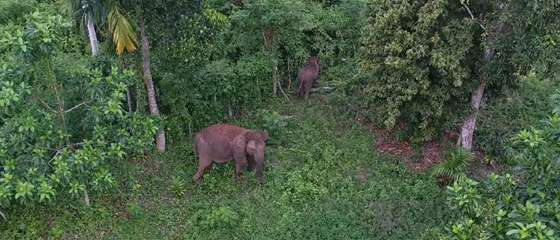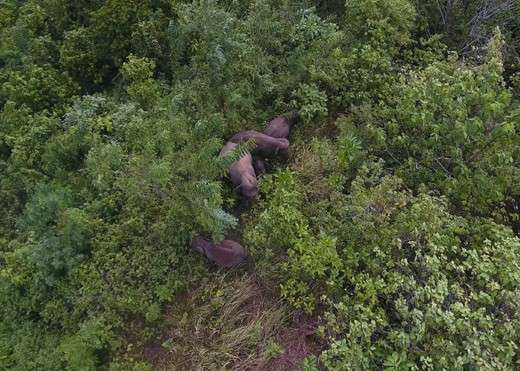Can drone technology save the Sumatran elephant?

Fauna & Flora International has acquired two quadcopter drones to help reduce incidents of conflict between humans and wild elephants in Sumatra, Indonesia.
The acquisition of two quadcopter drones is helping Fauna & Flora International's (FFI) Aceh team to monitor the location of Sumatran elephants in Aceh, Indonesia, and respond quickly when elephants are approaching community farms to minimise potential conflicts.
A quadcopter is a type of remotely controlled drone (unmanned aerial vehicle) that has four rotors each with its own motor and propeller. One of the main advantages of using drone technology is that it allows field staff to easily reach inaccessible areas.
As well as monitoring elephants, FFI's Aceh team is also using the quadcopters to support forest patrols and produce detailed ground maps of community forest areas.
Dewa Gumay, FFI's Aceh Programme Manager says, "We need to improve handling of human-elephant conflict by combining technology and conservation actions. Using drones will help to effectively and efficiently detect the location of elephants in conflict areas. For conservation to be successful conservationists need to consider using relevant technology to support their efforts."

As humans encroach on the natural environment they often come into conflict with wildlife, leading to the deaths of both people and animals. Such is the case in Ulu Masen in Aceh Province on the Indonesian island of Sumatra, where farming communities are increasingly coming into contact with Sumatran elephants.
FFI has been working to protect both elephants and local communities in Ulu Masen since 1998 including establishing three Conservation Response Units in conflict hotspots. These teams help respond to calls from community members and drive elephants away from community farms.
The use of new drone technology will allow FFI to build on these efforts and make the response process more effective by monitoring where the elephants move to, to ensure they have not just transferred the problem to other community residences.
An increase in human-elephant conflict
Human-elephant conflict is a major issue in Ulu Masen and incidents regularly occur in four out of five districts in the area. Conflict has increased in recent years as local communities have expanded their farms into elephant habitat and is now one of the major threats to Sumatran elephants.
Illegal activities such as logging and hunting also disturb elephants, driving them into areas near the community residences. When humans and elephants interact there is a high risk of conflict due to elephant crop-raiding which is one of the greatest threats to the livelihood of farming communities on the Ulu Masen boundary.
Wild elephants are therefore generally viewed negatively by local people and often killed. The introduction of quadcopter drones to reduce incidents of elephants coming into contact with people has already begun to improve attitudes.
Provided by Fauna & Flora International





















